A country with a war-torn past, an incredibly diverse population, and some of the friendliest people I’ve ever met.
I think that there comes a point in every long-term trip where you stop reflecting and start living. You realize that happiness is composed of little moments, and when you’re in these moments, you have to cherish them. We’ve met some incredible people in Mostar, Dubrovnik, Kotor, Tirana, and Ioannina that have made these so-called moments so worthwhile. Lunch at a restaurant turned into Montenegran locals buying us many shots of Rakija, walking around Mostar turned into a deep conversation about Australian politics, and many other random, odd, and fantastic occurrences have made me want to hang onto the moments for as long as possible.
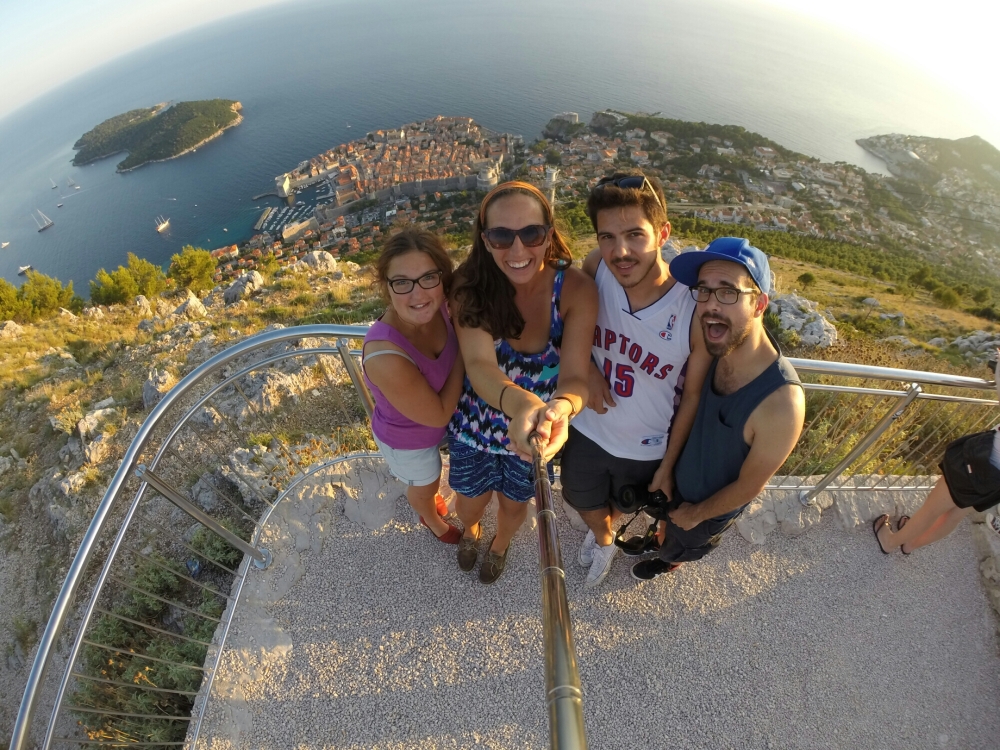
Perhaps some of the most unexpectedly amazing moments came from our time in Bosnia & Herzegovina. Croatia was not as fantastic as we’d hoped it to be, so instead, I’m trading in that recap for some explaining of the awe of Bosnia. Although we spent less than 48 hours in this country, it still blew me away.
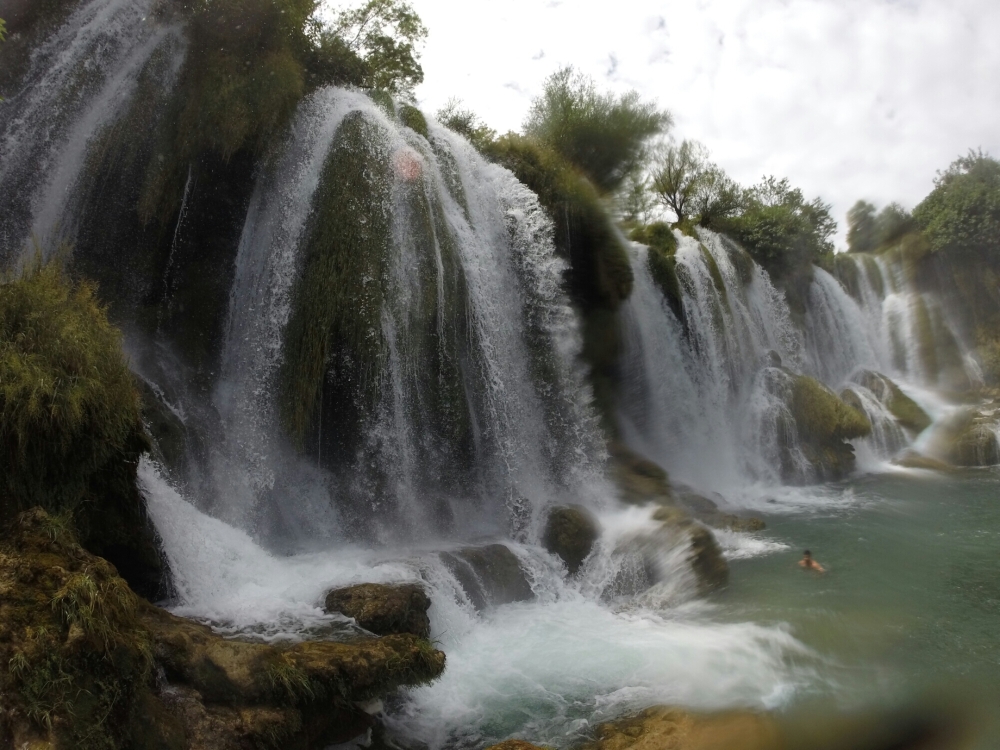
The most interesting aspect of Bosnia is its very young peace. The Bosnian War took place between 1992 and 1995. It all started because of the breakup of Yugoslavia and because of Bosnia’s incredibly diverse population at the time. Serbian Orthodox and Croatian Catholics in Bosnia, backed by their countries of origin, wreaked havoc on ethnic Muslim Bosnians over the course of 3 years.
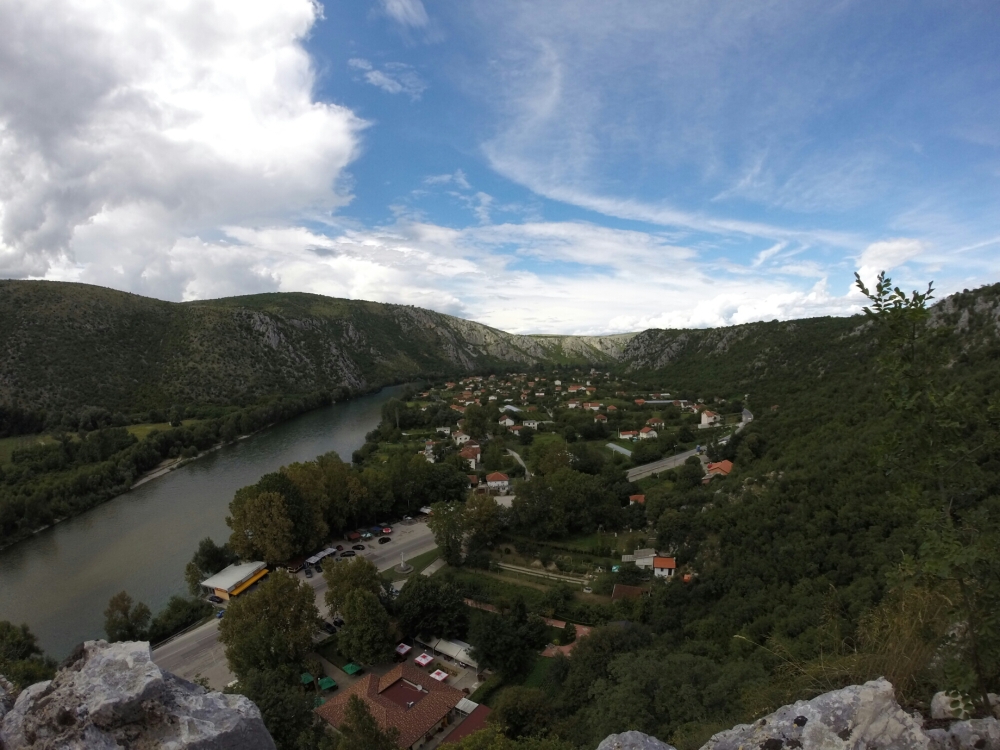
We spent our time in the town of Mostar. It’s one of the country’s bigger towns, and it was the town that was most destroyed during the war. It rests in a valley, and our amazingly friendly tour guide (who lived there during the war) told us that Croats would fire down from one side of mountains while Serbs would fire from the other.
Abandoned buildings with bulletholes were everywhere. A taller abandoned building with patterned cement had 2 torn-up flags raised at its top. Our guide said that it used to be a 7-story posh shopping center, so it was an easy target during the war. The 2 soldiers who were killed while guarding it used to stand near the flags, which is why they still blow in the wind today.
The town of Mostar is divided in two: the Muslim side and the Christian side. There are 2 bus stations, 2 hospitals, 2 high schools, and 2 of everything else you’d need to run a city. This division occurred as a result of the war. “I only go to the East side if I absolutely have to,” our guide told us.
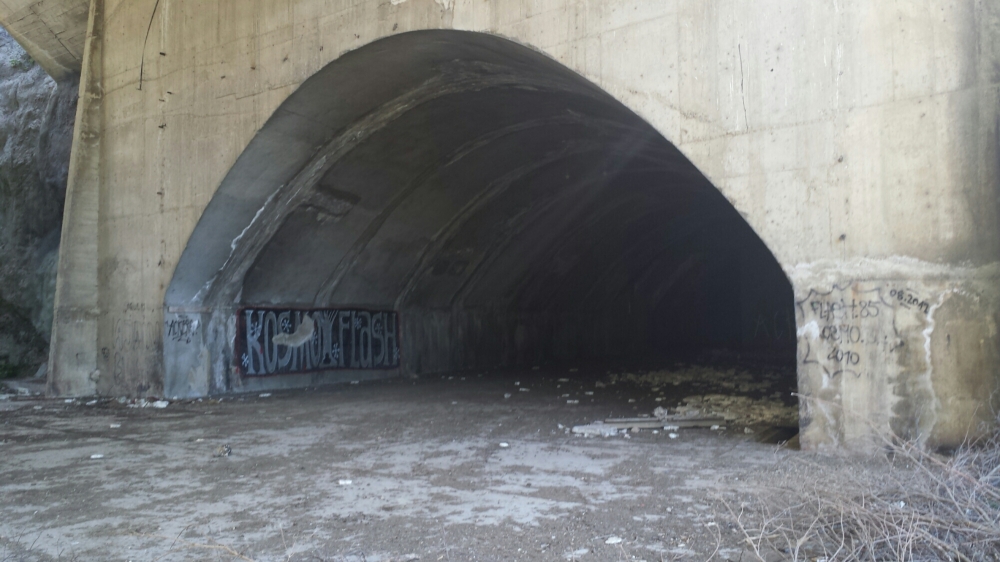
Apart from Mostar, we were also taken to a 300 meter tunnel near the town. It was built in the 1980’s by the Yugoslav president at that time. It was meant for military planes, important generals, and their families during whenever World War 3 was to begin, an impending threat at the time.
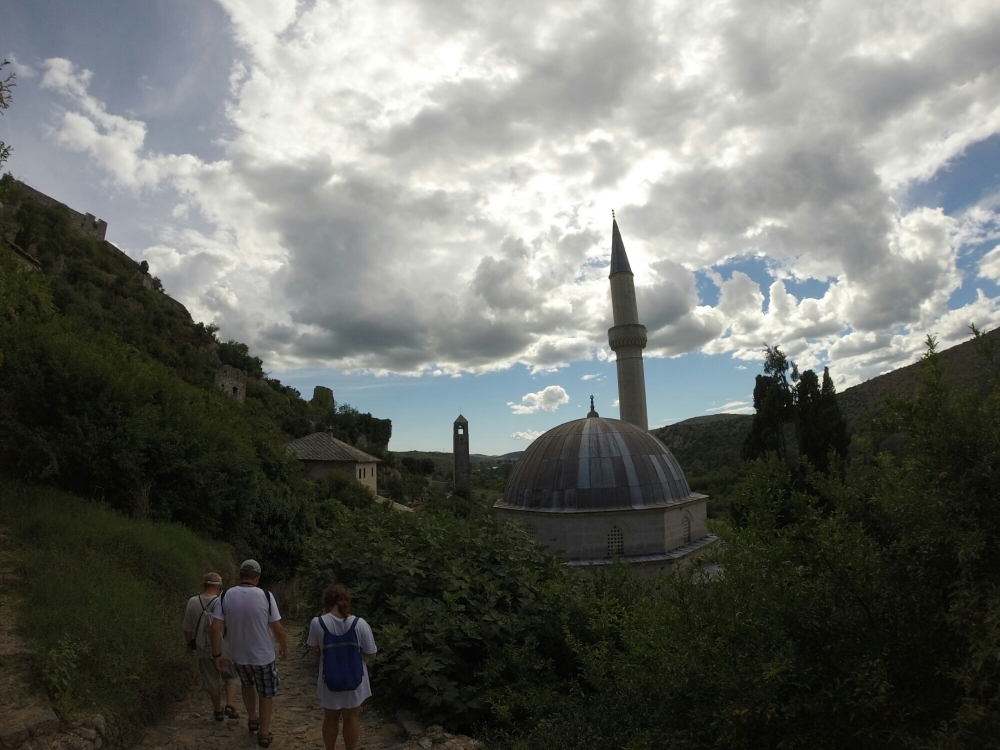
We also observed the Blagaj Tekija, a Muslim holy house. It was built by Turks in the 15th century to serve as a house of welcome for all Muslims. This, along with many mosques, gave us a taste of the religion and culture of ethnic Muslim Bosnians.
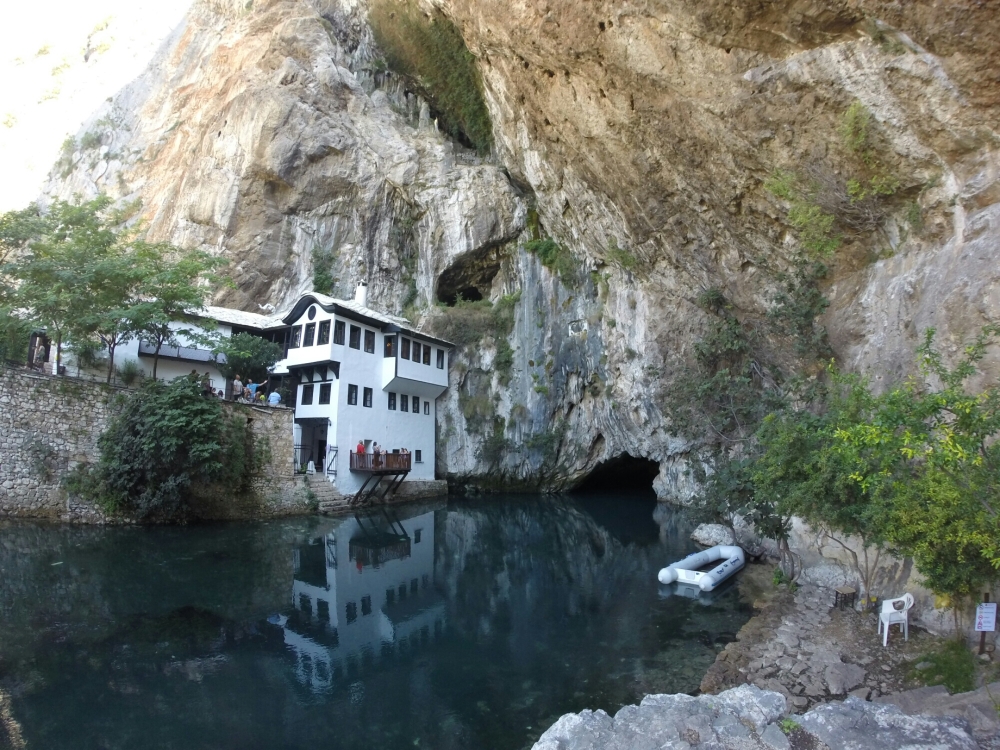
AND, to top it all off, we then went to visit Medjugorje. Located in Herzegovina, it’s one of the 3 Catholic pilgrimage sites in Europe (along with Portugal and France). People from all over the world come to this holy place, usually for a week, to confess, pray, attend mass, and hike to a location where Catholics in the past had admitted to seeing the Virgin Mary. The priests administering confession come as volunteers from all over the world so confessions can be done in 25 different languages. It was one of the most powerful places I’ve ever been to.

In addition to 180 degrees of religious diversity, we also experienced Bosnian culture in its natural beauty and, more importantly, food. We took a trip to Kravice waterfalls–much less touristy and cheaper than the famous Plitvice waterfalls in Croatia. And, you can actually swim in them!

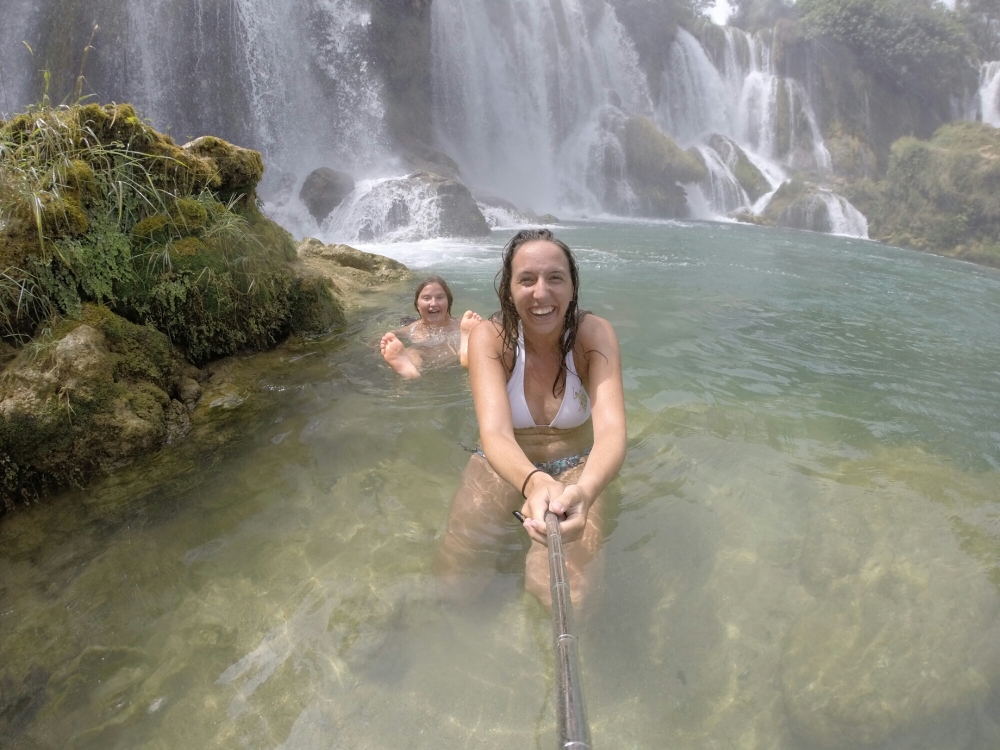
There, we also had an AMAZING meal. Multiple types of meat and huge/delicious beers for 6 euros each:
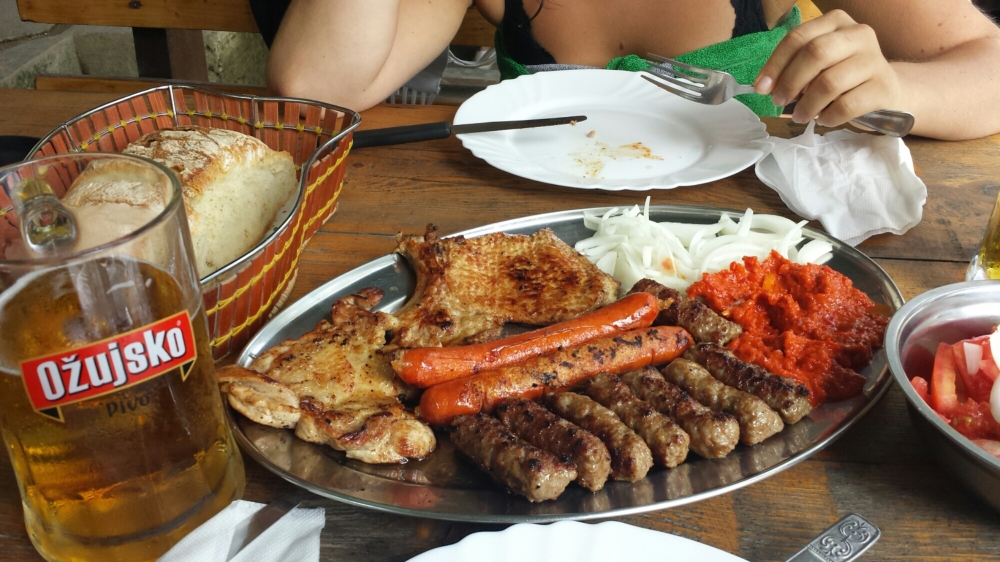
Our guide taught us so much about his country, and for that, we could never thank him enough. The 20-year-old remnants from the war and stories of locals have taught me more than any history book ever could. It was equally as humbling to see a population that consisted of 2 religions, both just as important to the country’s culture. There aren’t many other places in the world that are like this. I know for a fact that when I return to Europe next, 10 days in Bosnia will be on my agenda.
6 days left in this amazing adventure. Time to get lost in the Greek Islands!
Currently in: Athens, Greece
Next stop: Mykonos, Greece
Leah, I am enjoying your travels but especially like the humanism that you add to your essays and explanations. It seems that it has thus far been a humbling experience. You are so fortunate to be experiencing all of this which such an open mind and gentle and open heart. 🙂